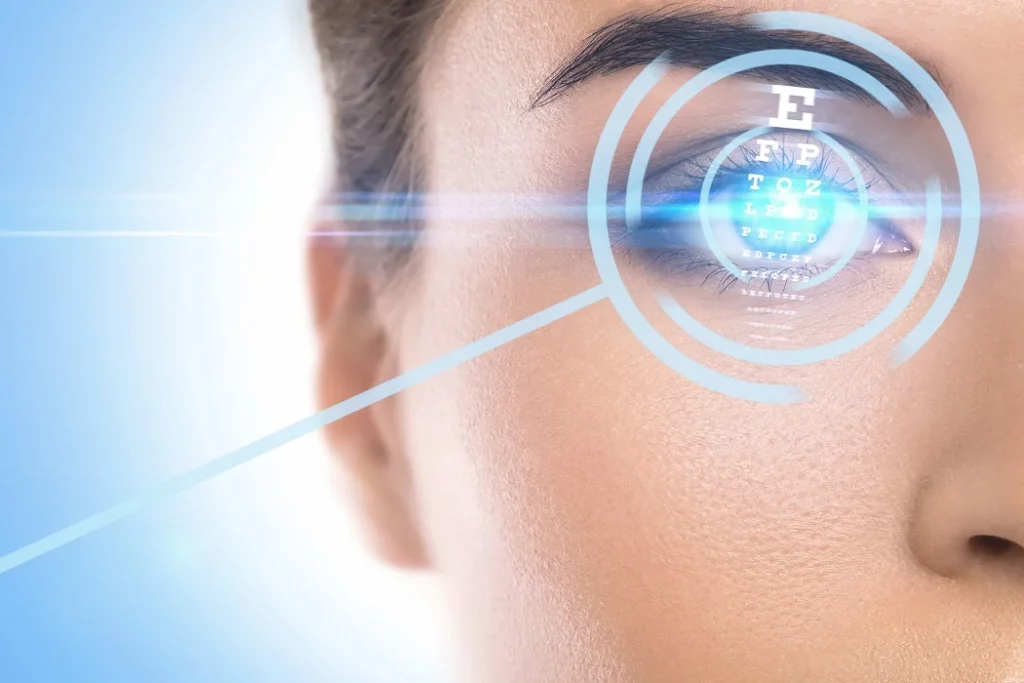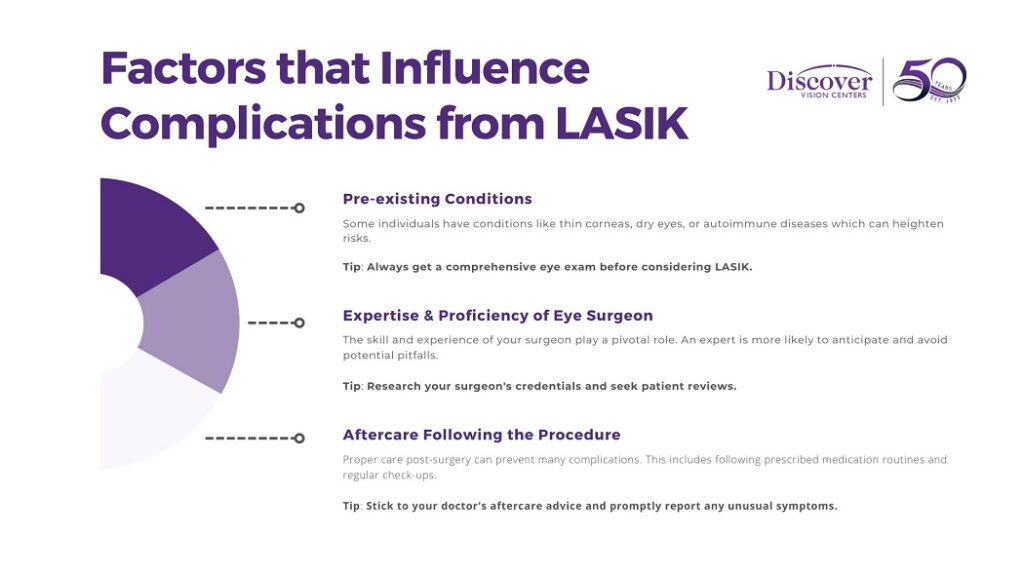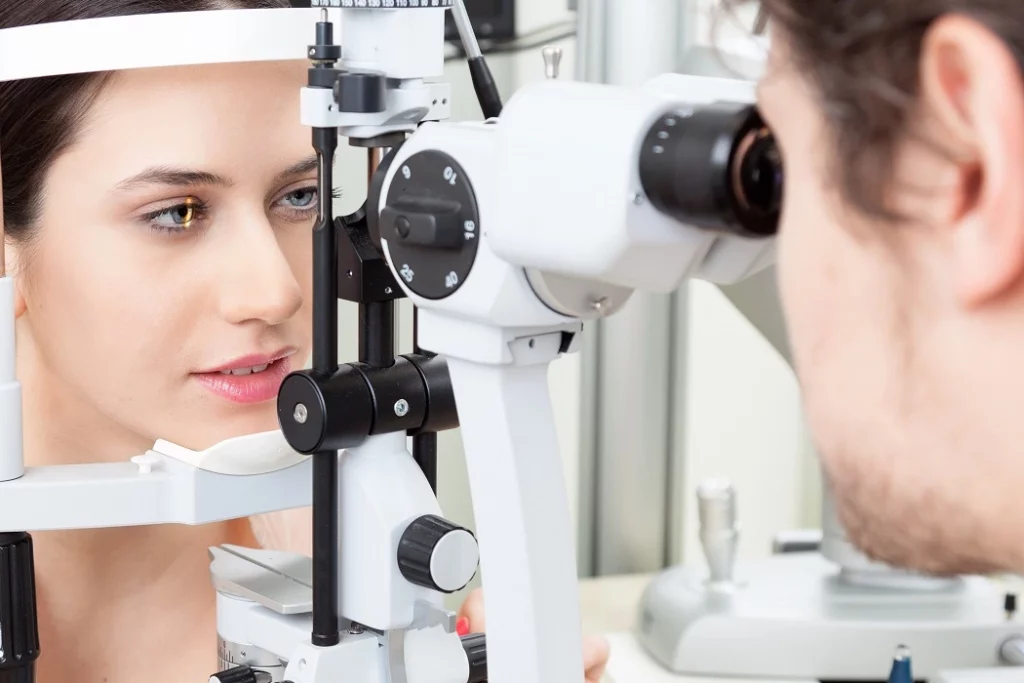

For many individuals considering clearer vision without the constant aid of glasses or contact lenses, LASIK eye surgery is the answer. But like all medical procedures, it comes with certain risks. At Discover Vision, we believe in a transparent approach to healthcare and eye surgery. In our opinion, it’s crucial for prospective LASIK patients to be fully aware of what the process entails. This article delves deep into the potential complications and safeguards of LASIK to help you make an informed decision about your eye health.
LASIK offers transformative vision improvement for individuals considering clearer vision without the constant aid of glasses or contact lenses. Discover Vision prioritizes transparent healthcare, ensuring informed LASIK decisions. Our article addresses possible complications and safeguards, empowering confident, informed choices for better eye health. LASIK provides visual clarity and convenience, guiding you with knowledge and optimism.
There are some side effects that patients should be prepared for:
After LASIK surgery, some patients may experience dry eyes, which is typically a temporary issue. Symptoms may include a dry or scratchy feeling, occasional redness, or a mild burning sensation in the eyes.
This discomfort can last from a few weeks to a few months post-surgery. In very few cases it may persist longer. Fortunately, there are plenty of solutions to alleviate this issue. If you experience dry eyes, treatment options include lubricating eye drops, prescription medications to stimulate tear production, and punctal plugs which block tear drainage and help keep the eyes moist.

Caused by the way laser vision correction reshapes the cornea, patients might also notice halos (glowing rings) around lights or starbursts (rays emanating from light sources), especially during nighttime. These symptoms may be short-lived due to tissue swelling that resolves with time.
These visual disturbances may reduce the quality of night vision, making activities like driving challenging.
Don’t worry, typically, these symptoms following laser eye surgery diminish over time. You can use anti-glare glasses at night and ensure a well-lit environment to better manage this side effect.
LASIK surgery can sometimes lead to temporary night-time halos and glare for a small percentage of patients. These visual disturbances are typically a result of the eye’s healing process. They almost always resolve as part of the normal healing process anywhere from a few weeks to a few months. Patients should be reassured that these issues are usually temporary and that clear, comfortable vision, including during nighttime activities, is the ultimate goal of the procedure.
During LASIK surgery, a corneal flap is created. Flap-related complications can involve issues like flap displacement, wrinkling, or small growths called epithelial inclusions.
These complications can affect the recovery process and overall vision quality. In severe cases, it can lead to vision loss.
Sometimes, interventions are needed and typically resolve the issue. These include repositioning the flap, using antibiotic drops, or in rare cases, additional eye surgery.
In LASIK surgery, a corneal flap is created, a step that has become increasingly precise in modern procedures. While flap complications are rare, they may involve minor issues like displacement, wrinkling, or occasional epithelial inclusions, which are small growths. It’s reassuring to know that these complications rarely occur and, when they do, they are typically manageable with prompt interventions. The remarkable progress in LASIK techniques ensures that such complications are extremely uncommon, and the vast majority of patients enjoy a smooth recovery.
These arise when the laser removes too little (under-correction) or too much (over-correction) tissue during refractive surgery. This imprecision can lead to blurry vision or other vision problems post-surgery.
A secondary LASIK procedure often termed a “touch-up” or “enhancement,” might be required after the initial recovery to rectify these issues.
In LASIK surgery, achieving the precise level of vision correction is a primary goal, but occasionally, under-correction or over-correction may occur. These arise when the laser removes too little (under-correction) or too much (over-correction) tissue during refractive surgery. It’s important to note that with advances in LASIK technology and with experienced surgeons, the risk of under-correction or over-correction has significantly decreased, and most patients attain the desired visual outcome.

While LASIK eye surgery boasts a high success rate in correcting vision, it’s essential for potential candidates to be aware of the less common, and rare concerns that might arise post-surgery.
Corneal ectasia can occur without surgery in patients with keratoconus or pellucid marginal degeneration.
It can occur after surgery in rare cases. Corneal ectasia is a progressive thinning and bulging of the cornea that can occur many months or even years after LASIK.
The number one risk factor is an irregular shape of the cornea that can be seen pre-operatively. Lessor factors that can be associated with ectasia after LASIK are a thin cornea, higher levels of myopia, or significantly thin residual corneal thickness post-surgery. Symptoms can include poor vision and seeing ghost images.
Treatments can range from custom contact lenses to corneal cross-linking in more advanced cases.
This occurs when cells from the outer layer of the cornea grow under the corneal flap after LASIK surgery. This is rare with primary surgery. It is more common when enhancements are done many years after the original surgery.
Some patients may experience mild cases which often resolve without intervention. In more advanced presentations, patients may note blurry vision or discomfort. Patients with severe instances will see an improvement to vision and discomfort when these cells are surgically removed.
Though LASIK is an elective surgery with a high success rate, post-operative eye infection or inflammation can still occur infection is on the order of 1 in many thousands of surgeries.
Signs include redness, pain, discharge, and a decline in vision quality.

Visual aberrations, such as halos, glare, or starbursts, are infrequent occurrences after LASIK surgery. It’s important to emphasize that these issues are rare and advances in LASIK technology and meticulous surgical techniques have significantly reduced the likelihood of experiencing visual aberrations.
Although rare, the corneal flap can sometimes dislocate from its position and is most often associated with trauma. This poses a potential for reduced vision quality. Immediate medical intervention is necessary to reposition the flap and restore clear vision.
Often termed ‘sands of the Sahara,’ DLK is an inflammatory eye disease that may appear post-LASIK. If DLK is untreated, it can impair vision results.
Unlike DLK, PISK is associated with high eye pressure, which can lead to corneal swelling. It’s crucial to monitor symptoms and intervene early. It typically occurs when patients have been on extended doing of topical steroid drops.
The LASIK complication rate has always been a point of consideration for those looking to improve vision through refractive surgery. Fortunately, with advancements in technology and techniques, the complication rate has significantly decreased over the years.
Recent studies suggest that less than 1% of patients experience any significant complication. In addition, thorough screening processes ensure that only optimal candidates undergo the procedure to minimize potential surgical complications. Not to mention, choosing a reputable surgeon from a trusted clinic will reduce the chances of post-surgical complications.
LASIK patients seeking improved vision through laser eye surgery should be aware that several factors can influence the outcome and their visual results.

Certain conditions predispose individuals to a higher risk of complications following LASIK. For example, patients with significant dry eyes might experience exacerbated symptoms post-surgery. Those with thin corneas can have limited room for error during the procedure, while those with autoimmune diseases or other eye diseases might face delayed healing. It’s important that prospective LASIK patients have a thorough evaluation with an experienced eye doctor before undergoing the procedure to assess these risks.
One of the most critical decisions a LASIK patient will make is choosing their surgeon. An experienced and skilled eye surgeon can drastically reduce the potential for complications. When selecting a LASIK doctor, patients should ask about their years of experience, the number of LASIK surgeries they’ve performed, and their complication rates. Additionally, we encourage you to seek testimonials or reviews from previous patients for more insights into the surgeon’s expertise.
Following the advice of the eye doctor post-surgery is pivotal to ensure the desired outcome and reduce the risk of LASIK complications. You will increase your LASIK success and visual results by adhering to medication schedules, following doctor recommendations, and protect the eyes from potential irritants to reduce LASIK risks.

Navigating the journey to correct vision problems through LASIK involves more than just the surgical procedure itself. It’s also about adopting proactive measures that reduce potential complications and ensuring that the healing process is smooth and efficient. This approach improves outcomes and instills confidence in patients as they work towards achieving a clear vision. Peace of mind is key!
A meticulous eye examination before the procedure can play a significant role in minimizing complications of LASIK. This thorough assessment can identify potential challenges and risks and ensure a patient is a suitable candidate for the procedure. Tests, such as corneal thickness measurements, dry eye assessments, and checking for irregular astigmatism help tailor the surgery to each individual’s needs.
After undergoing a LASIK procedure, it’s possible for patients to occasionally experience unexpected visual symptoms. Contact the eye doctor immediately to ensure any potential complications are addressed at the earliest stage.
Are you contemplating LASIK? It’s crucial to be well-informed about the potential risks associated with LASIK eye surgery. Many people wonder, “Is LASIK dangerous?” The best way to get accurate answers and dispel myths is through professional consultation.
Discover Vision offers a LASIK online self-test to help you assess your suitability for the procedure. Use it to dive deep into understanding the procedure, its benefits, and its risks. Take the first step: Schedule a consultation with our trusted specialists today and ensure you make a well-informed decision. Your vision deserves nothing but the best care, and seeking LASIK surgery with our team can set you up for success.